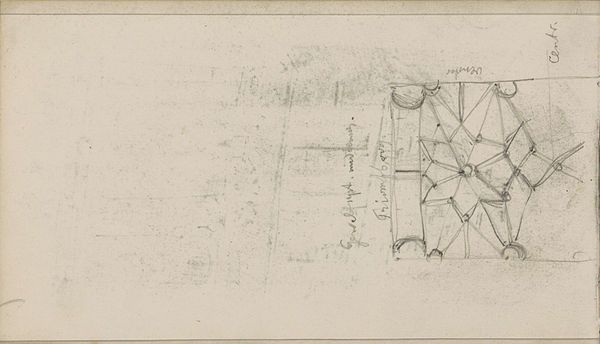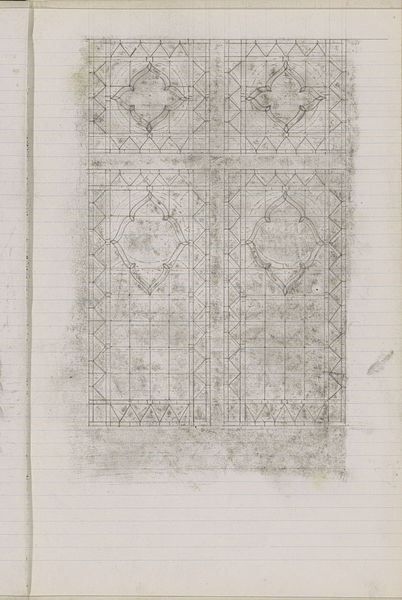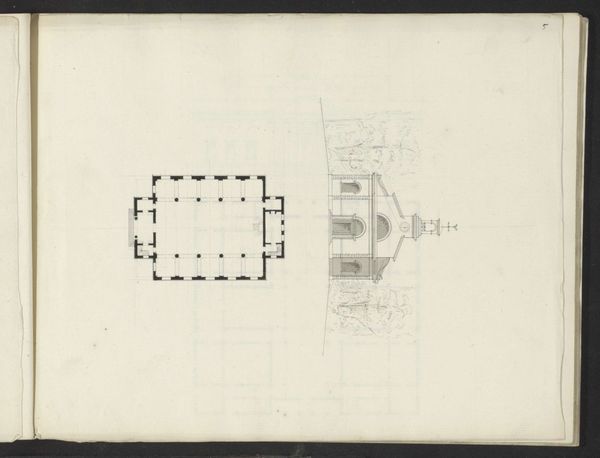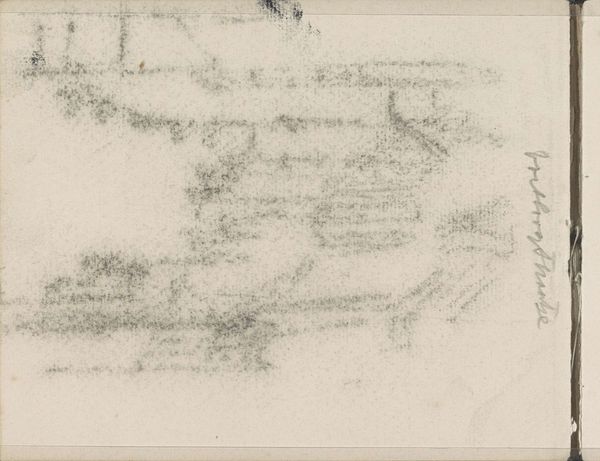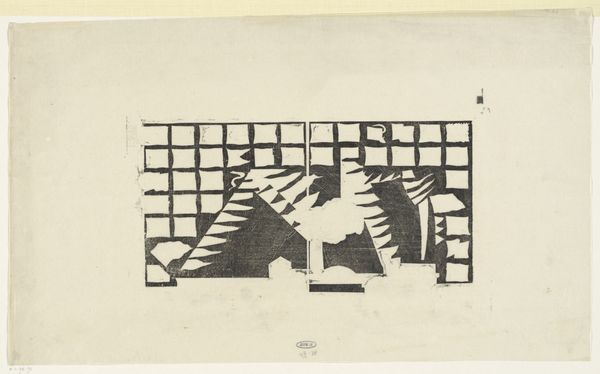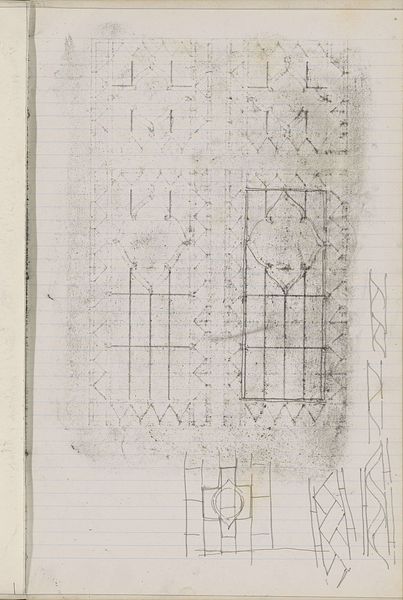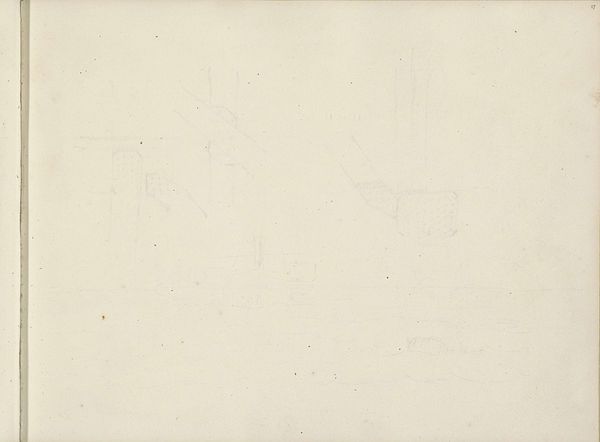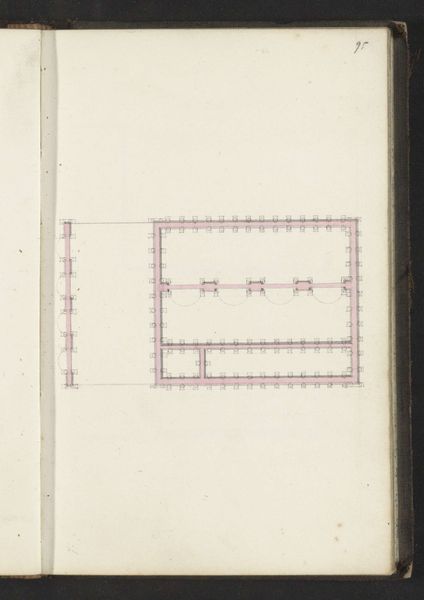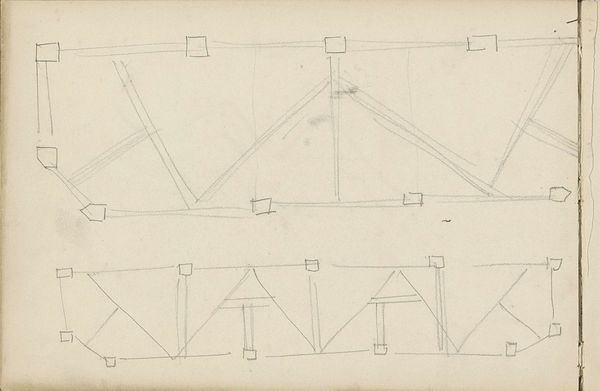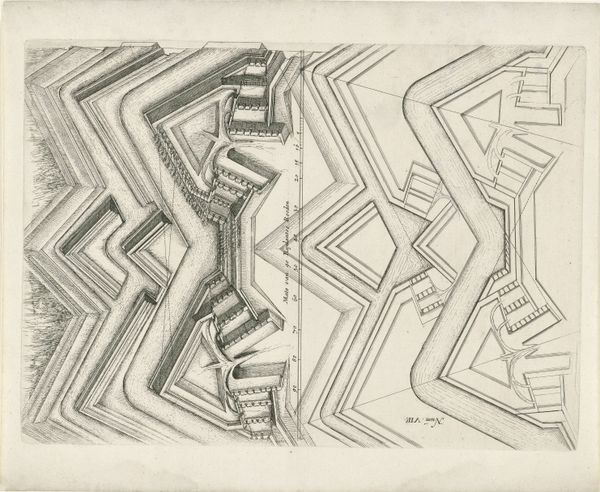
drawing, pencil
#
drawing
#
form
#
geometric
#
pencil
#
line
Copyright: Rijks Museum: Open Domain
Editor: Here we have Julie de Graag's "Haakwerk met decoratief blokkenpatroon" from around 1892. It's a pencil drawing, quite small and delicate, of what looks like a crocheted or knitted pattern. I'm immediately drawn to its repetitive nature; it's almost mesmerizing. What strikes you about this piece? Curator: This drawing gives us insight into the intersections of art, craft, and design at the turn of the century, especially concerning the burgeoning Art Nouveau movement. The drawing's subject, seemingly a textile design, is incredibly interesting. It positions "craft" not as merely functional but as a legitimate subject for artistic inquiry. How do you see its relationship to the decorative arts? Editor: Well, it feels like she’s elevating a craft typically associated with domesticity to the level of fine art through drawing. The precise lines and attention to detail are striking. Do you think the social status of women influenced her focus on such subjects? Curator: Absolutely. Women artists often engaged with "feminine" crafts as a form of both expression and, sometimes, quiet subversion. De Graag may have been making a statement about the value of women's labor and creativity. Consider how the Arts and Crafts movement sought to reclaim handcraftsmanship against industrialization; it wasn’t merely aesthetic. What do you make of the grid-like structure underneath? Editor: That’s interesting. The grid almost feels like an underlying structure attempting to give a sense of order and intention to the design. I initially overlooked the grid but I am more aware of the composition and pattern-making techniques within the art, and how societal forces can shape artistic choices. Curator: Precisely! It demonstrates the thought process behind decorative design at this time, where even ‘domestic’ work was heavily considered and deliberately produced within specific social contexts. This was informative!
Comments
No comments
Be the first to comment and join the conversation on the ultimate creative platform.
